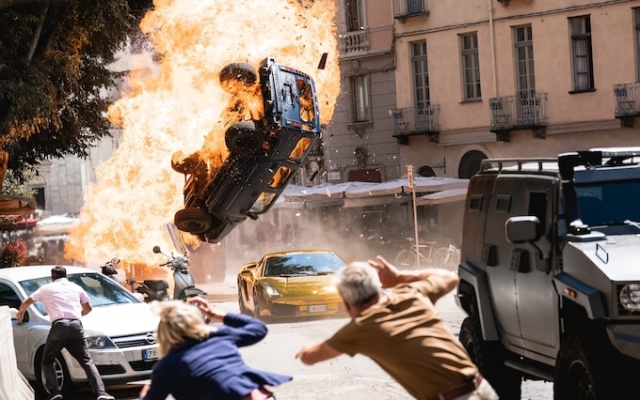 Budget inflation: Fast X became the fourth most expensive movie ever made Photo: Louis Leterrier
Budget inflation: Fast X became the fourth most expensive movie ever made Photo: Louis Leterrier
Why Hollywood movies are so expensive to make during these days? Short answer: because of these stories. Not so long ago, an early version of a major blockbuster was shown to studio executives in private. For the most part, they liked it, but everyone agreed that there were a couple of issues that needed to be fixed.
One was related to action scenes. The film was originally planned five years earlier; In the intervening time, another studio's blockbuster franchise has become hugely popular, in no small part due to its spectacular set action. Result? All such scenes in the new film will have to be re-shot to match the scenes of the opponent.
Another issue involved certain shifts in current real-world affairs that made the protagonist look much less likeable than he would have been half a decade ago, meaning that his scenes also had to be rewritten and reshot.
< p >A schedule was drawn up, the cast assembled, and a film crew hired. But there was a catch: the new scenes, many of which took place in nature, in nature, were filmed at a completely different time of the year than in the original. So, a visual effects studio was hired to digitally edit the foliage in post-production, airbrush the snow, and so on. Could the filmmakers have instead just waited for the right season to come back? Absolutely not: the film's release was only six months away, and due to the franchise's tight plans for the future, it could by no means be delayed. Thus, there was only one option left: go ahead and to hell with the additional costs, which amounted to about a third of the film's original budget.
Throughout the history of cinema, there have always been moments when the cost of production has risen: for example, in the last crazy days of silent films or during the craze for historical and biblical epics on large canvases in the 1950s and early 1960s. But the franchise's era, which spans roughly from 2008 to the present, has experienced perhaps its wildest and most rampant resurgence to date. In 1995, in the final days of the original blockbuster summer revolution that began with Jaws in 1975, Kevin Costner's infamous $172 million box office flop, Water World, set a new record, the highest ever. Today it wouldn't even make the top 100.

Next week will be released Fast X, the 10th album of Fast & A furious film that cost $340 million: almost 10 times more than the first. A month later, Indiana Jones and the Dial of Doom comes out, a $300 million legacy worth more than the first four Indiana Jones films combined. Then there's Mission: Impossible — Death Wages Part One ($290 million) and The Flash ($220 million), all sequels to December's Avatar: The Path of Water ($350 million to $460 million, depending on the whoever you ask).
True, most of it doesn't quite compare to Pirates of the Caribbean 4's $410 million budget in 2011 or the astronomical $447 million spent on Star Wars: The Force Awakens in 2015, which remains the highest ever. announced. (The last two Avengers films, Infinity War and Endgame, which officially cost $325 million and $356 million, are still a mystery, but subsequent filings suggest the total is closer to $1.2 billion.)
But these numbers are still only early official figures from the studio and could increase further as new financial reports emerge in the coming years. And even if they remain accurate, by the end of this summer, four of the 10 most expensive films ever made will have been made in the previous 12 months. .jpg» /> 'The Legacy Sequels': Indiana Jones and the Dial of Doom are worth more than the first four movies combined. Image Credit & Copyright: Jonathan. Ollie
The current leap is not limited to film; individual releases of flagship television dramas now regularly occupy film-like budgets. The recently launched Amazon Citadel cost $50 million per episode, none of which was longer than 40 minutes.
So what's going on? In the post-COVID era, new on-set protocols (testing, isolation, personal protective equipment, etc.) have increased the cost of each large-scale shoot by 5-6.5%, and in the case of new ones, much more. Mission: Impossible, which spent 18 months outsmarting the virus in Europe at mind-boggling costs. But the amounts had already begun to rise long before the pandemic hit. To find out why, I spoke to a number of producers and visual effects directors who told me about the strange and terrifying financial landscape created by what could be called the «Cinematic Universe business model»: the various series of interconnected films that the industry has become possessed.
They tend to be built around existing «brands» like Star Wars, Harry Potter and the Marvel and DC superhero stables, and their reliance on digital spectacle is the most obvious inflationary factor. The stars are paid 15 to 20% of the film's budget, and the director's and producers' fees are the same (although they can often be coaxed with the promise of a share of future earnings).
But visual effects now cost about as much as those sums combined — more than a third of the film's total budget — eclipsing even the cost of the physical shoot itself. (As for those poor, amazing screenwriters, the script usually takes no more than five percent of the budget to develop.) This visual effects bill is due to both the complexity of the effects and their ubiquity. Whereas the original 1993 Jurassic Park had 63 CGI frames, last year's Jurassic World Dominion had 1450 — about 10 per minute.
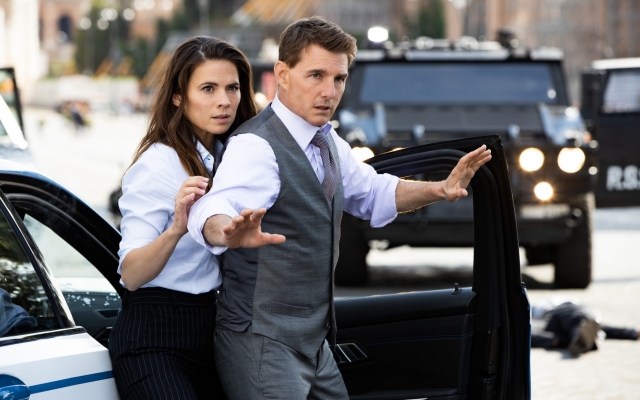 Hayley Atwell and Tom Cruise in Mission: Impossible: The Wage of Death, Part One. Image Credit & Copyright: Christian Black.
Hayley Atwell and Tom Cruise in Mission: Impossible: The Wage of Death, Part One. Image Credit & Copyright: Christian Black.
However, as expensive as they are, visual effects-heavy films still make good commercial sense because they don't exclude any potential audience. Regardless of age, gender, nationality, culture, or cognitive function, anyone can sit in front of, say, Morbius and have more or less the same experience.
The Spider-Man spin-off starring Jared Leto received terrible reviews upon release last year, as well as a low C+ CinemaScore, suggesting that the audience agreed with the critics. It also has the rare honor of bombing the US domestic box office twice, as Sony decided to re-release it in the States after its initial failure sparked a bunch of ironic holiday memes. However, even so, it still breaks even thanks to its international earnings.
For the same reason they appeal to global audiences, serialized films based on already familiar properties of pop culture are also certainly more likely to provide their creators with numerous cash-in opportunities—sorry, extra-profit opportunities. So, while making just five successful films a year may seem riskier than making 30 films on a reasonable budget—and thus six times more likely to succeed—reasonable films are unlikely to inspire your own action figure sets or dedicated zones in cinema. theme parks.
 Astronomy: Star Wars: The Force Awakens Star Wars is officially the most expensive movie ever or created. Photo: David James/Lucasfilm Ltd
Astronomy: Star Wars: The Force Awakens Star Wars is officially the most expensive movie ever or created. Photo: David James/Lucasfilm Ltd
These revenue streams are now so prolific that even when huge films fail — as happened with Disney's John Carter and The Lone Ranger in close proximity in the early 2010s — profits from the studio's other blockbusters (from selling more than just tickets). , but also licensed and products) more than make up for the loss.
Another factor is changes in the labor market: again, partly, but not entirely, Covid is to blame. Over the past five years, the number of film crews has increased significantly, especially in the UK, which has become the center of major Hollywood productions. More films and TV series are made here than ever, and in order for the best technicians and masters to work on yours, you have to pay them well.
The same goes for the cast, of course. It's often said that contemporary Hollywood is struggling to mint new movie stars, but it's created a significant second tier of witty and handsome performers with passionate online followings — and the more of them you can cram into your movie, the more likely it is to grab attention. . crowd. A perfect example is Denis Villeneuve's Dune: a dark sci-fi adaptation with visuals so austere that they sometimes border on the abstract. Part two. Unlike character actors who would have played such roles two decades ago, these stars sell tickets. But they're all in high demand for that very reason, so again, the cost of securing them—not to mention arranging the inevitable reshoots due to their busy schedules—continues to rise.
 Attracting the crowd: Timothée Chalamet and Zendaya in the upcoming Dune: Part Two. Image Credit & Copyright: Niko Taverniz.
Attracting the crowd: Timothée Chalamet and Zendaya in the upcoming Dune: Part Two. Image Credit & Copyright: Niko Taverniz.
So we're back to the nightmare we started with: the reshoots themselves. Back in the day, actors and crew would go to the set and the studio would have to make do with whatever footage they brought. But modern manufacturing techniques allow more intervention at arm's length than ever before. When a US production is based in the UK, for example, executives in Los Angeles will watch rushes (an industry term for daily footage) all night and get their lists of requirements in the director's mailbox before he or she wakes up. . Thought you could finally move on from that incredibly difficult, time-consuming episode you filmed yesterday? Think again.
Moreover, the assembly line nature of the cinematic universe model requires individual release dates to be set several years in advance, which means that films are often put into production before the scripts are fully developed, the characters polished, and the plot finalized. Many of those I spoke to described the discouraging cloud of uncertainty that now often hangs over filming as a result: neither the director nor the studio really knows what kind of movie they are making until they sit down and watch the first one. draft. The reshoot process is described as a way to «clear up» the project: in other words, only when you know what you have do you understand what else you need to complete.
The problem is that sometimes it can take a while to work. One of the reasons today's outrageously expensive films often end up looking a little, shall we say, cheap, is because some of the material deemed necessary for the final cut was put together at the last minute: remember, a franchise's release date can rarely be known. delayed, thanks to various sequels and spin-offs already rolling down the conveyor belt right behind it. One recent superhero movie was shown in theaters and about 600 of its visual effects shots are still unfinished: various effects studios had to keep working on them after release in order to complete it in time for home entertainment.

Sometimes chaos can be wreaked even by films that haven't been made yet. Back in the spring of 2022, a near-finished version of Warner Bros' upcoming superhero adventure The Flash was shown to executives and test audiences, and they were all apparently very passionate about it. But after a change in management at DC Studios in November, it had to be hurriedly redesigned to serve as a bridge between films made under the old regime and those lined up under the new.
For now, this mayhem seems to be sustainable and will remain so as long as viewers support it. As one franchise dies, another grows, and the cinematic multiverse survives.
It's a super business model that can make a lot of money, and a uniquely crazy one that you can try to create good art.
Nine movies that broke the bank1. Gone with the Wind (1939): $4 million 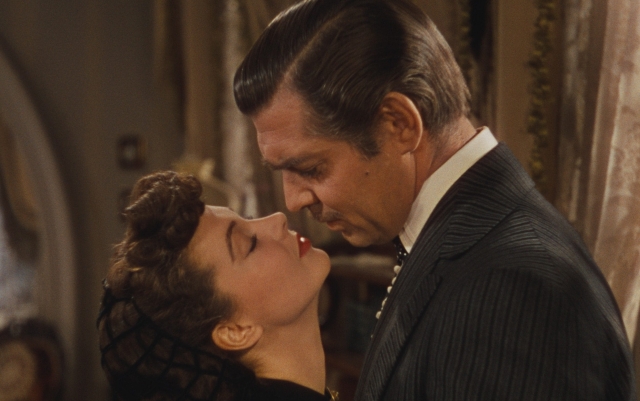 Vivien Leigh and Clark Gable in Gone with the Wind 2: Duel in the Sun (1946)): $5 million3. Ben-Hur (1959): $15 million4. Cleopatra (1963): $31 million 5. Superman (1978): $55 million6. Who Framed Roger Rabbit? (1988): $58 million7. Titanic (1997): $200 million (2007): $300 million9. Star Wars: The Force Awakens (2015): $447 million.
Vivien Leigh and Clark Gable in Gone with the Wind 2: Duel in the Sun (1946)): $5 million3. Ben-Hur (1959): $15 million4. Cleopatra (1963): $31 million 5. Superman (1978): $55 million6. Who Framed Roger Rabbit? (1988): $58 million7. Titanic (1997): $200 million (2007): $300 million9. Star Wars: The Force Awakens (2015): $447 million.
Fast X in theaters Friday













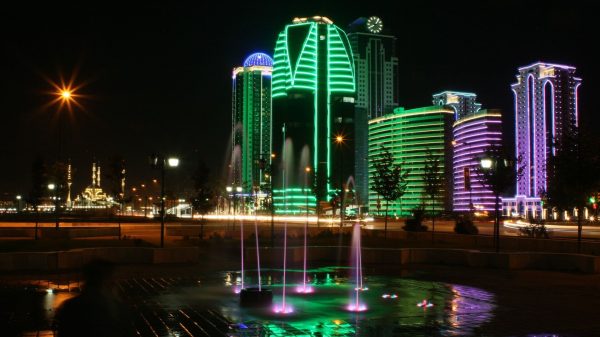





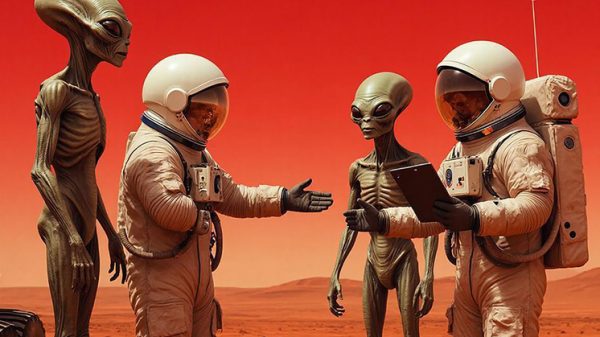
































Свежие комментарии